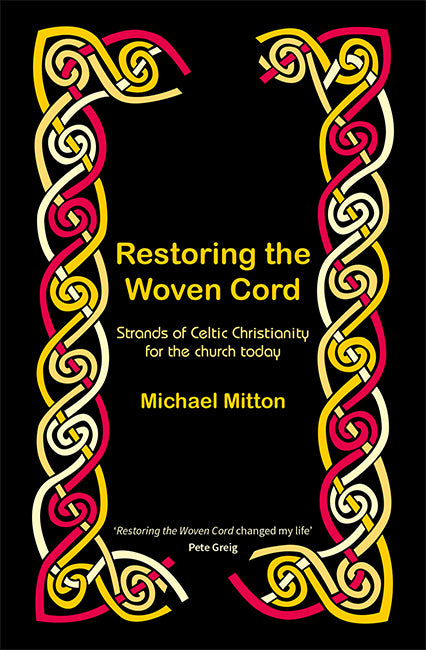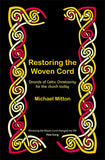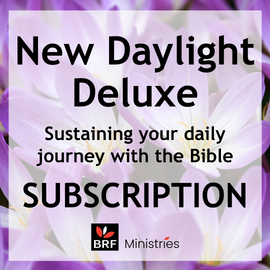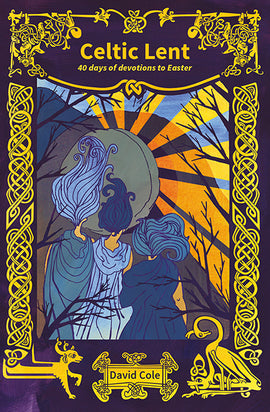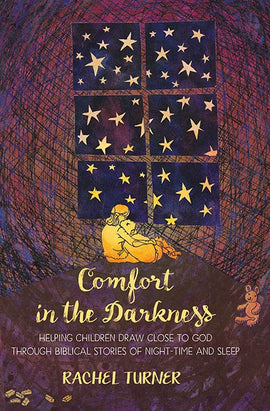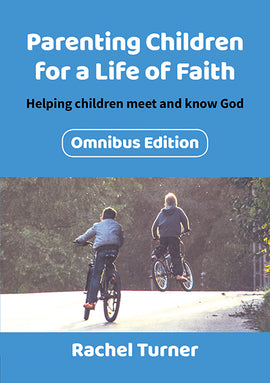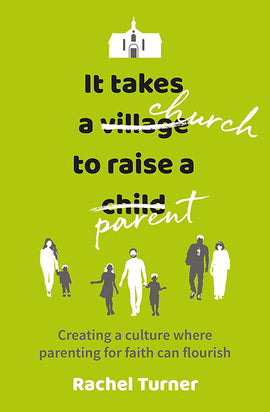Restoring the Woven Cord: Strands of Celtic Christianity for the Church today
Fully revised third edition of a popular title
When they discover Celtic spirituality, many Christians feel that in some sense they have come home. As they begin to explore the people and places significant in the early centuries of Christianity in the British Isles, they find an expression of faith that weaves together strands of being and belonging, worship and witness in a unique and powerful way.
| Title | Restoring the Woven Cord: Strands of Celtic Christianity for the Church today |
| Author | Michael Mitton |
| ISBN | |
| Description | When they discover Celtic spirituality, many Christians feel that in some sense they have come home. As they begin to explore the people and places significant in the early centuries of Christianity in the British Isles, they find an expression of faith that weaves together strands of being and belonging, worship and witness in a unique and powerful way. Restoring the Woven Cord takes 15 leading figures from that era - ranging from Patrick of Ireland to John of Beverley - and shares something of their stories, showing their burning love for the Bible, their depth of prayer, their radical commitment to the poor and to caring for creation. Reflecting on their lives and works, we can find powerful inspiration for our own walk with God and rich resources for the ministry of the local church. This is a revised edition of a best-selling book first published in 1995. It now includes insights on the continuing popularity and development of Celtic spirituality from Ray Simpson of the Community of Aiden and Hilda, Lindisfarne, Jack Stapleton of the USA branch of the Community, Bishop Eric Pike of South Africa and Liz Hoare, Tutor in Prayer, Mission and Spirituality at Wycliffe Hall, Oxford. Contents include:
|
| Details |
|
When they discover Celtic spirituality, many Christians feel that in some sense they have come home. As they begin to explore the people and places significant in the early centuries of Christianity in the British Isles, they find an expression of faith that weaves together strands of being and belonging, worship and witness in a unique and powerful way.
Restoring the Woven Cord takes 15 leading figures from that era - ranging from Patrick of Ireland to John of Beverley - and shares something of their stories, showing their burning love for the Bible, their depth of prayer, their radical commitment to the poor and to caring for creation. Reflecting on their lives and works, we can find powerful inspiration for our own walk with God and rich resources for the ministry of the local church.
This is a revised edition of a best-selling book first published in 1995. It now includes insights on the continuing popularity and development of Celtic spirituality from Ray Simpson of the Community of Aiden and Hilda, Lindisfarne, Jack Stapleton of the USA branch of the Community, Bishop Eric Pike of South Africa and Liz Hoare, Tutor in Prayer, Mission and Spirituality at Wycliffe Hall, Oxford.
Contents include:
- The strands of our faith
- Prayer: Patrick
- Spiritual battle: Illtyd
- Ministry of women: Brigid
- Wild goose: Brendan
- Community: David
- Creation: Columba
- Evangelism: Columbanus
- Prophecy: Fursey
- Authenticity: Aidan
- Bible: Boisil
- Children: Cuthbert
- Creativity: Hilda and Caedmon
- Death and the dead: Drythelm
- Healing and miracles: John of Beverley
- The woven cord
Michael Mitton is a freelance writer, speaker and spiritual director. He has worked for the Diocese of Derby as the Fresh Expressions Adviser. Before that, he was Deputy Director of the Acorn Christian Healing Foundation, heading up Acorn's Christian Listeners, and prior to that was Director of Anglican Renewal Ministries. He has also written Travellers of the Heart and Seasoned by Seasons for BRF and is a regular contributor to New Daylight.
The Reader, Autumn 2019. Review by John Foxlee
The sub-title is ‘Strands of Celtic Christianity for the Church today’ and the premise is that there are themes of early Christianity held by the faithful in Ireland, Scotland, Wales and northern England which have re-emerged as essential throughout our modern Church and not only in those places. They are illustrated by brief but vivid descriptions of the lives and stories of fifteen Celtic saints; for instance St Patrick on prayer, St Brigid on the ministry of women and St John of Beverley on healing and miracles. There are lessons that are relevant to today. St Columba was expelled from Ireland for instigating a battle in which many died and lived out his life in contrition, serving God on Iona. We have done things to threaten the beauty of creation that he appreciated and should be ashamed as he was for taking away people’s lives. This book is very useful for initiating thought in all sorts of ways: sermons, group discussions and writing. It should be an inspiration for our work today.
Reviewed by John Foxlee
___________________________________________
'Outlook', Derby Cathedral Magazine, June 2019. Review by Pat Neal
‘I have called this book “Restoring the Woven Cord” because it is my deep conviction that the Celtic church challenges us to rediscover the strands of our faith and find ways of weaving them together in our personal lives and in the life of our churches.’ Michael Mitton
Restoring the Woven Cord by Michael Mitton is engaging, enlightening and short (fewer than 200 pages). It does not purport to be academic theology or history but is in fact something much more interesting. It opens the world of the Celtic saints and shows us how their way of understanding and living a life based on the Gospel aligns with and is different from our own. Using Bede’s Ecclesiastical History of the English People and other primary sources, Mitton has chosen the issues which interest him most and the saint whose life best demonstrates an issue. He tells the story of the saint with additional background and reflection; then gives a Bible reading, questions for meditation, and a prayer. The Saints’ lives are related uncritically. I would read them as poetry rather than history: they tell a different kind of truth.
The story of Patrick leads into a discussion on prayer; Illtyd, whom some regard as the founder of the Welsh church, is used to engage in a thoughtful piece on spiritual battle. I was particularly taken by the idea of encompassing or encircling prayer and the prayer known as St Patrick’s Breastplate. I know and love this prayer in the sung version known as ‘The Deer’s Cry’, which begins ‘I arise today through the power of Heaven.’ Brigid is used to show the important ministry of women. The story of Brendan leads into ideas of the Celtic spirit of adventure, the divine restlessness which sent Brendan and others across the seas, ‘not only to spread the Gospel but with a mystical quest to seek glimpses of paradise.’ The story of David is used to show the importance of community. His chapter also explains the concept of the ‘soul-friend’ or anamchara, a spiritual guide or counsellor.
I was particularly pleased to find a chapter on Columba and care for Creation. I have never been to Lindisfarne, but Iona I know well. Mitton quotes in full a beautiful poem by Columba which takes me back to Iona immediately. It begins, ‘Delightful it is to stand on the peak of a rock, in the bosom of the isle, gazing on the face of the sea.’ This chapter also reminds us that the Celtic love for Creation included the animal world. It mentions the story of Cuthbert and the otters, which I first read in Helen Waddell’s book Beasts and Saints (1934).
The chapter on Columbanus and Evangelism I found more challenging. Mitton praises the cultural sensitivity of the Celtic saints who went to live alongside the people they wished to convert, respecting their beliefs. He cites the custom of well-dressing in Derbyshire as an example. ‘For example, a well dedicated to the water-sprite Eilan was rededicated to St Helen.’ He sees similarities here with some of the Fresh Expressions that are emerging in the church today. He moves on to talk about the Pioneer Ministry, church planting, Power Evangelism, Alpha and ‘Healing on the Streets’. He states that the witness of the Celtic church ‘challenges the unbelief in the church today, which is only just beginning to emerge from the cold grip of rationalism.’
The chapter on Fursey opens a discussion on prophetic vision and the imagination, saints foretelling the future and revealing events that were happening elsewhere. ‘In charismatic circles nowadays, it would be said that Cuthbert had been given “a word of knowledge”.’ They looked for signals from heaven in nature and dreams and were sensitive to ‘disturbances in the air’. As Mitton writes, ‘This openness to the intuitive, together with the confident anticipation that God delighted to communicate with his people, meant that the Celtic church often went about its decision-making processes in rather different ways from the church of today.’
The chapter on Aidan is on authenticity and contains an interesting comparison between Celtic Aidan or Cuthbert and Roman Wilfrid. Wilfrid was not content with an austere life and went in for rather grander things. The chapter on Boisil emphasises the importance of the Bible, especially the Psalms and the Gospel of John. In the chapter on Cuthbert and respect for children, there is the story of a three year old boy who prophesied to the eight year old Cuthbert to give up idle play because he was to become a most holy priest and bishop. I would be cautious today about encouraging children to prophesy, but we do spend a lot of time attempting to heal the Inner Child in the adult.
In the final chapters of his book, Mitton reflects on Celtic creativity through Hilda and Caedmon, and laments that the church today is still ‘bound up in its addiction to words’. I like words myself, and art. I am less enamoured of digital projectors and flags. There is a challenging chapter on Death and the Dead which begins with the story of Drythelm and his after-death experience. The final chapter is on John of Beverley and healing experiences. The ability to heal was then seen as evidence of holiness, as was the concept of the uncorrupted body.
I have learned such a lot from this book. Michael Mitton wears his learning lightly and has made it eminently accessible to the lay person. I have found the prayers both beautifully phrased and useful. Although I am not particularly charismatic in my own devotional and spiritual life, I hope to include the Celtic strand in future and to restore the woven cord in myself.
Review by Pat Neal

